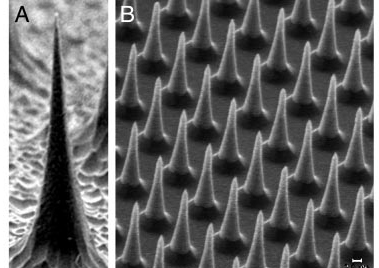Biomedical
Microneedle assisted allograft seeding
Market need
In the event trauma causes peripheral nerve defects, surgical repair is required to reconstruct the site that was damaged. Over the last several years, processed human acellular allograft has become a viable alternative to autografts for repairing short and medium peripheral nerve defects. One drawback to using allograft nerves is that neurosupportive cells are removed from the allograft during processing. To account for this problem, neurosupportive cells can be seeded on the implant to promote nerve regeneration. Typically, a single hypodermic needle is used to inject cells into either end of the nerve allograft--- though this delivers a high volume of cells, the process may damage the nerve architecture, damage the cells being injected, and result in uneven or clumped dispersions. A more uniform and less traumatic seeding process would improve the distribution of viable and healthy neurosupportive cells and potentially improve the ability of nerve allograft to support nerve regeneration.
Technology summary
This technology improves the delivery of neurosupportive cells. Instead of using a single hypodermic needle for seeding cells, this technology employs an array of microscopic needles to deliver cells evenly to the periphery of the allograft. This process limits trauma to the nerve and cells and ensures a quicker and easier distribution of cells throughout the intended target.
The figure below displays the design of the microneedle arrays for seeding allograft nerves. Both A and B give a depiction of the size of each needle and configuration of the technology. The composition of the device improves both the uniformity when seeding cells and reduces potential trauma to the nerve and cells during delivery. This array can come in both a flat sheet of microneedle arrays and as a dermaroller with microneedle arrays.

